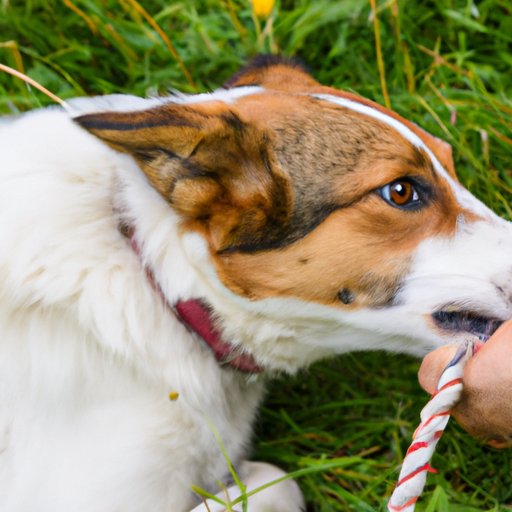
Introduction
When it comes to owning a dog, biting behavior can be a serious problem. Not only can it be harmful to people and other animals, but it can also be a sign of underlying issues like anxiety or fear. Fortunately, with the right techniques, you can train your dog to stop biting and exhibit positive behavior. In this article, we’ll discuss the most effective methods for stopping biting behavior in dogs.
Establish Boundaries and Consistency
The first step in addressing biting behavior is to set clear boundaries and rules. Make sure everyone in the house is on the same page about what is and isn’t allowed. For example, you may want to establish rules about what furniture your dog is allowed on, where they’re allowed to go in the house, and how they should behave around other animals and people. Once you’ve established these rules, it’s important to enforce them consistently.
Use Positive Reinforcement
Positive reinforcement is an effective way to encourage good behavior in dogs. When your dog exhibits the behavior you want, be sure to praise them immediately. This will help them understand what they’re doing right and encourage them to repeat the behavior in the future. In addition, it’s important to discourage bad behavior using positive reinforcement. For example, if your dog tries to bite someone, immediately redirect their attention to a toy or treat instead. Over time, your dog will learn that good behavior is rewarded, and bad behavior is discouraged.
Teach Basic Obedience Commands
Dogs thrive on routine, and teaching basic obedience commands is a great way to provide structure and establish yourself as the alpha in your household. Commands like “sit,” “stay,” and “down” are easy to teach and can help redirect your dog’s attention when they’re exhibiting negative behavior. In addition, practicing these commands regularly can help keep your dog’s behavior consistent over time.
Redirect Biting Behavior
It’s important to provide your dog with appropriate outlets for their energy and chewing, especially if biting has become a problem. Make sure your dog has access to plenty of toys and chews that are appropriate for their age and chewing strength. When you see your dog start to bite, redirect their behavior to one of these toys or chews immediately. Over time, your dog will learn to associate these items with chewing and playing, rather than biting people or other animals.
Identify and Address Underlying Issues
Sometimes, biting behavior can be a sign of an underlying issue like anxiety or fear. It’s important to work with a trainer to identify these issues and develop a plan to address them. For example, if your dog seems anxious around other animals, a trainer may recommend gradual exposure to other dogs in a controlled setting to help your dog overcome their fear. By addressing these underlying issues, you’ll be able to get to the root of your dog’s biting behavior and help them overcome it.
Avoid Physical Punishment or Aggression
It’s important to remember that physical punishment or aggression can actually make biting behavior worse. Instead, focus on using positive reinforcement techniques and deterrents like bitter-tasting sprays or loud noises to discourage biting behavior. By avoiding physical punishment, you’ll be able to establish a positive relationship with your dog and help them learn the right behaviors without causing fear or aggression.
Conclusion
Biting behavior can be a major problem for dog owners, but it’s important to remember that it’s a problem that can be solved with the right techniques. By setting boundaries and rules, using positive reinforcement, teaching basic obedience commands, redirecting biting behavior, identifying and addressing underlying issues, and avoiding physical punishment, you’ll be able to train your dog to stop biting and become a well-behaved member of your household. With time and patience, you’ll be able to enjoy a happy, healthy, and loving relationship with your furry companion.




